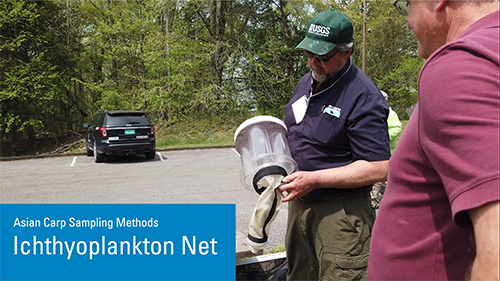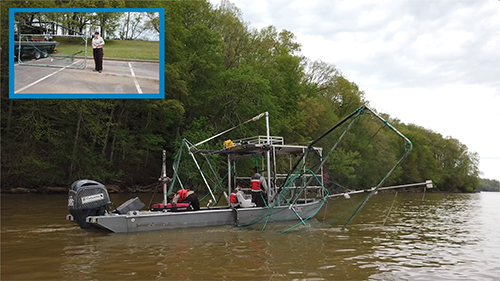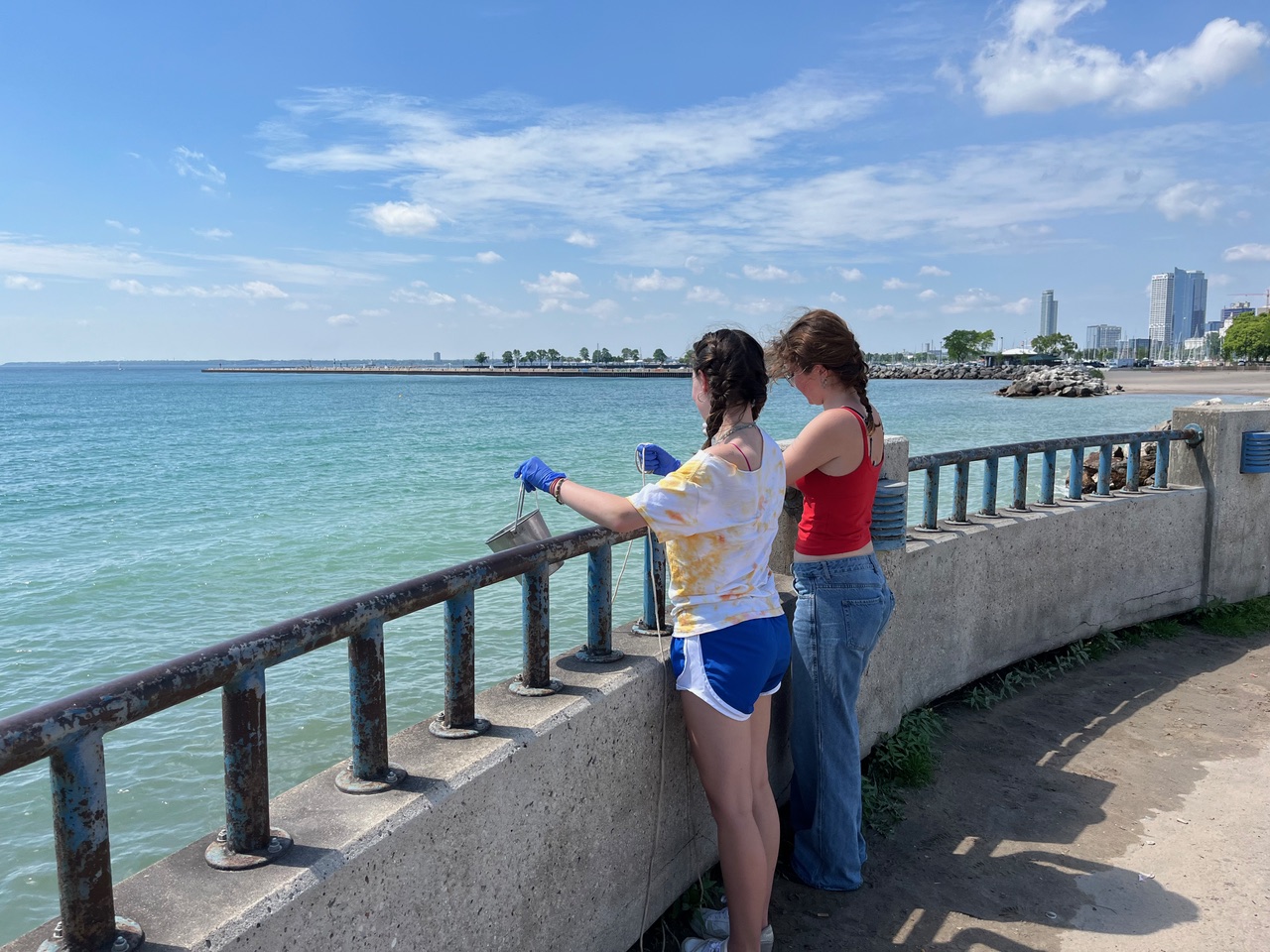A series of online videos for fisheries managers who need to sample for invasive carp species like bighead and silver carp is now available. This unique resource—a collection of 17 videos that can be watched on YouTube—grew out of a workshop that took place in spring 2019 at Lake Barkley State Resort Park in Kentucky.
The partners behind the workshop and the resulting video series are the Mississippi River Basin Panel on Aquatic Nuisance Species (MRBP), Wisconsin Sea Grant, the U.S. Fish and Wildlife Service, the U.S. Geological Survey, and the Kentucky Department of Fish and Wildlife Resources. The videos can be found on Wisconsin Sea Grant’s YouTube channel.

Duane Chapman of the U.S. Geological Survey discusses an ichthyoplankton net and its use for silver, bighead, grass and black carp sampling. (Photo: Bonnie Willison)
The April 17-18, 2019 workshop on invasive carp species featured experts from around the country, who presented to about 65 attendees.
The MRBP funded the event, and Wisconsin Sea Grant Video Producer Bonnie Willison filmed on location in Kentucky to create the training videos, working in cooperation with Sea Grant Aquatic Invasive Species Outreach Specialist Tim Campbell. Campbell also serves as the Wisconsin representative on the MRBP.
Said Campbell, “This workshop was a one-of-a-kind interagency effort to train people in the methods needed to sample for bighead and silver carp.” Those methods can be different from standard ones familiar to most U.S. fisheries professionals. For example, different gear may be needed, and the video series covers different types of gear and how to use it, among other topics.
“I’m so glad that workshop organizers had the forethought to capture this event so this knowledge could be preserved and shared with more people,” added Campbell.
The effort as a whole is aimed at more effective management of these invasive species in the waters of the Mississippi River basin, a vast watershed covering about 40% of the continental U.S. The methods demonstrated at the workshop can be used for a combination of monitoring (to know where the fish are) and control (to remove the unwanted species).

Emily Pherigo of the U.S. Fish and Wildlife Service discusses the paupier boat and gives an overview of the equipment. (Photo: Bonnie Willison)
Bighead and silver carp are problematic because they eat a lot, grow rapidly and become quite large, with silver carp exceeding 60 lbs. and bighead carp exceeding 100 lbs. If left unchecked, they become abundant and make recreational uses of lakes and rivers difficult due to their sheer numbers. They also pose a significant threat to the Great Lakes, where they are not yet established.
The training videos may be viewed on YouTube.
Questions may be directed to Campbell at 608-263-3259 or tim.campbell@wisc.edu.





